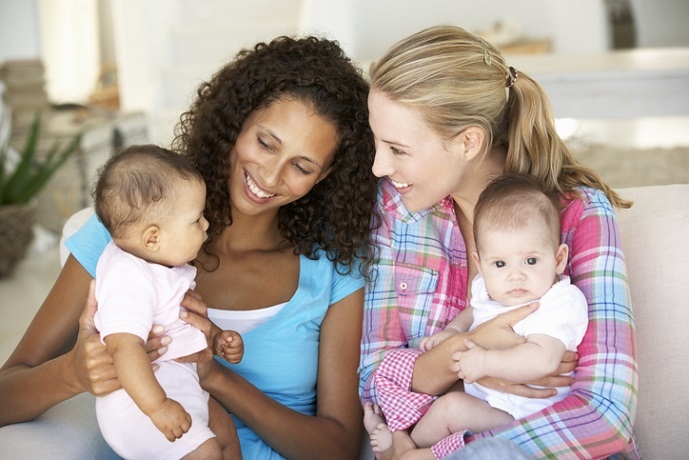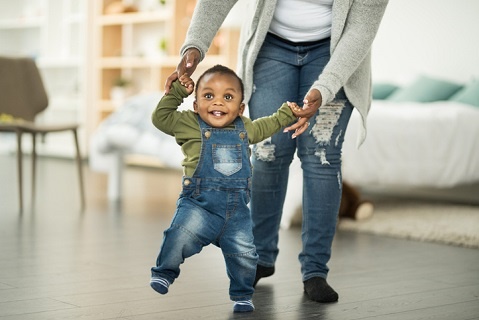
The research below is based on Canadian findings but the details remain relevant for South African readers.
People often say that babies are like little sponges — with their ability to soak up language quickly and easily.
Yet much of the early research on language acquisition has focused on young infants learning only one language. This research was guided by an implicit assumption that learning one language is the usual and optimal way to learn to talk.
This idea was so strong that many questioned whether exposing babies to more than one language might be more than babies — as so-called “language sponges” — could absorb. Some even raised concerns that multi-language exposure might confuse babies and hinder their speech and language development.
Research in recent years paints a different picture. Language researchers now recognize that more and more babies are growing up in families with two or more languages. According to Statistics Canada, in 2016, 19.4 per cent of Canadians reported speaking more than one language at home, an increase from 17.5 per cent in 2011.
Research also directly challenges the assumption that single language exposure is required to optimize early language acquisition.
At McGill University’s Infant Speech Perception Lab, we have been studying how babies begin to take their first steps in acquiring their native language or languages.
Also see: Bilingual or mother tongue? What experts say is best for your child’s development
First language steps
Long before babies can say their first words, they’re already taking many steps to learn about their language. Our research has studied one of these challenging first steps — the ability to track when one word begins and ends in speech, or what are heard as word forms.

Before babies begin speaking words, there are many steps involved.
It’s challenging to track these word forms in speech as people rarely pause between words when they speak. As adults, we can locate word boundaries in our native language effortlessly. However, we often fail altogether when we encounter an unfamiliar language.
Babies have to learn the same skill for their native language, as learning to isolate word forms is a critical skill in learning new words. The ability to distinguish word forms earlier in life predicts later vocabulary development.
So how do babies it? Luckily, languages are consistent in what makes a word, and with sufficient exposure, babies can find and use these rules to recognize word forms or units in their native language.
Word forms in different languages
Words are formed differently in different languages. Let’s consider English and French, Canada’s official languages.
English is a stress-timed language, which means that each syllable within a word is spoken with different stress or emphasis. For example, say a two-syllable word in English out loud. Chances are you produced the first syllable with more stress — that is, longer, louder and with a higher pitch. Most two-syllable words in English follow this pattern (for example, BA-by, HAP-py, BOT-tle).
Babies who are only exposed to English can detect this rule — that stressed syllables more likely than not represent the start of a word — and they can use this rule to find words in conversation. However, babies who are only exposed to French fail to do so.
This is because French is a syllable-timed language, where each syllable within a word has nearly equal stress. Syllables are given more stress only when they fall at the end of a phrase or a sentence (for example, donne-moi un ca-DEAU).
Nevertheless, since stress does not provide a consistent rule for distinguishing words in French speech, French listeners have to rely on other rules to find words in conversation.
Research has shown that French adults and babies track the co-occurrence of syllables in words. For example, they might track that the syllable “ca” is often followed by “deau,” so “cadeau” would likely be a word.
Bilingual babies
The rules above are helpful for babies learning only one language, as they can focus on learning just the rules of their own language. For example, we know that babies learning just English or just French can make use of the rules above to track word forms in their native language by their first birthday.
But, it seems that babies learning both English and French have to contend with conflicting rules. If they were to focus on stress cues, would a stressed syllable represent the beginning of the word, as it frequently happens in English? Or would it mean the end of the phrase or sentence, as in most cases in French?
To navigate this challenge, bilingual babies need to keep track of whether they are hearing English or French. But, is this too difficult or confusing for bilingual babies?
With these questions in mind, we recently conducted an experiment in Montréal, a city where over half the population speak both French and English.
We tested bilingual babies in a task that assessed how they recognize word forms, and we compared them to their monolingual peers. The experiment involved 84 babies, ranging from eight- to ten-months old. We tested babies learning only French, babies learning only English and bilingual babies learning both languages.
As we expected, the French-only and English-only babies could track word forms in their native language, but not in the other language. Impressively, bilingual babies were on par with their monolingual peers in tracking word forms in both English and French at the same ages, even though the languages differ significantly. Further, bilingual babies who heard both languages spoken by the same parent appeared to do better at the task.
This is an impressive feat given that bilingual babies have to learn two different language systems in the same time period that monolinguals learn their single language. It is certainly a learning progression, but even young children can tell when they are hearing two languages.
These studies provide extra assurance that, given sufficient exposure, bilingual babies as language sponges can soak in their two languages. Recent studies suggest that this multi-language exposure alters the brain structure in ways that lead to more efficient cognitive processing. This may even be helpful for children with Autism Spectrum Disorder. Our research will continue to study how we talk to bilingual babies so that we can better support the language-learning process.
Adriel John Orena, Postdoctoral Researcher, Infant Studies Centre, University of British Columbia and Linda Polka, Professor, School of Communication Sciences and Disorders, McGill University
This article is republished from The Conversation under a Creative Commons license. Read the original article.
Chat back:
Share your story with us, and we could publish your mail. Anonymous contributions are welcome.
Read more:
Multilingualism in education must be celebrated as a resource, not a problem
Ryan Gosling and Eva Mendes’ kids speak Spanglish!




 Publications
Publications
 Partners
Partners















